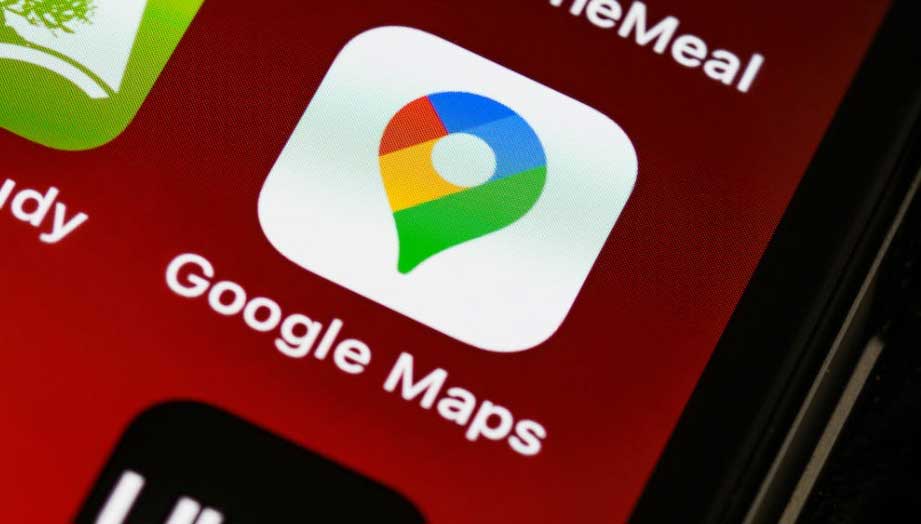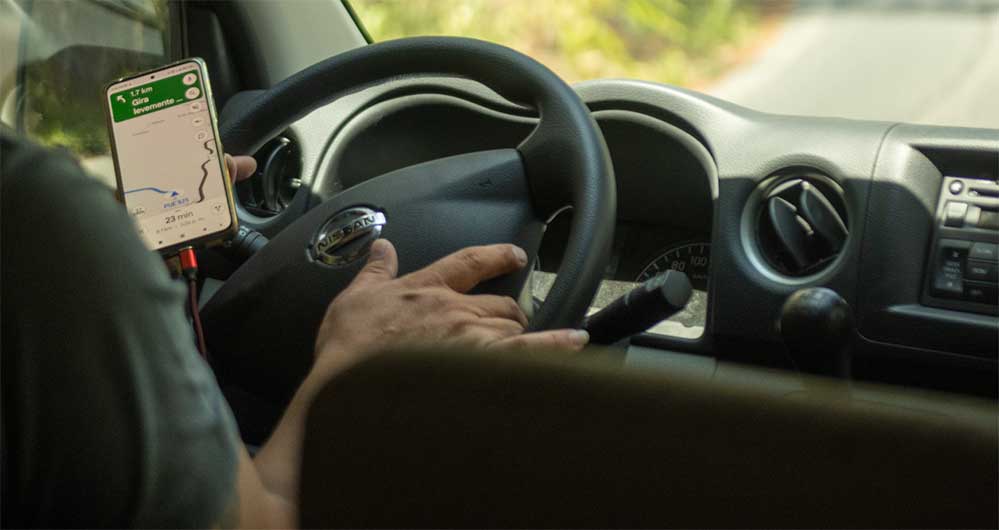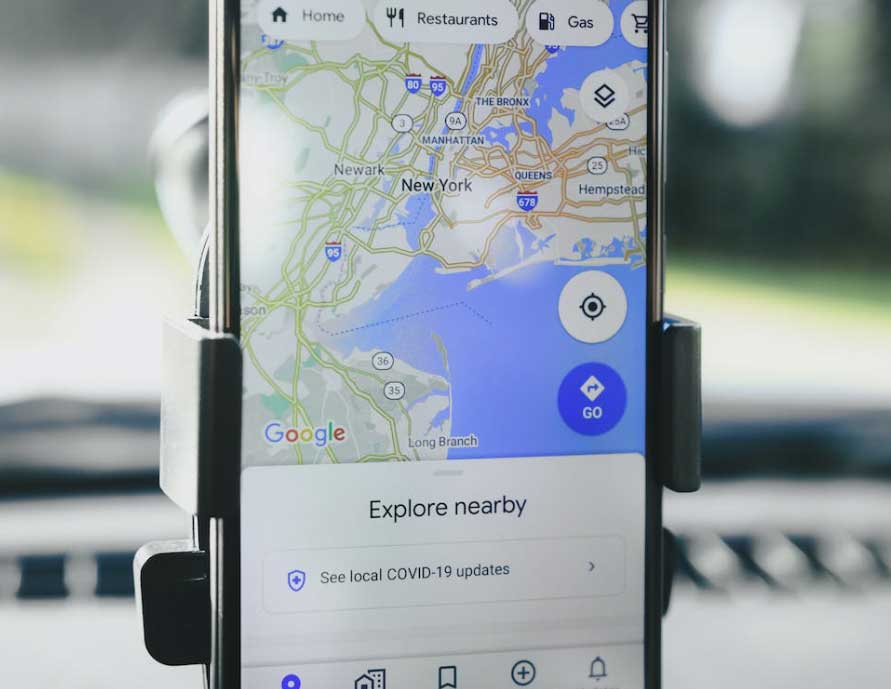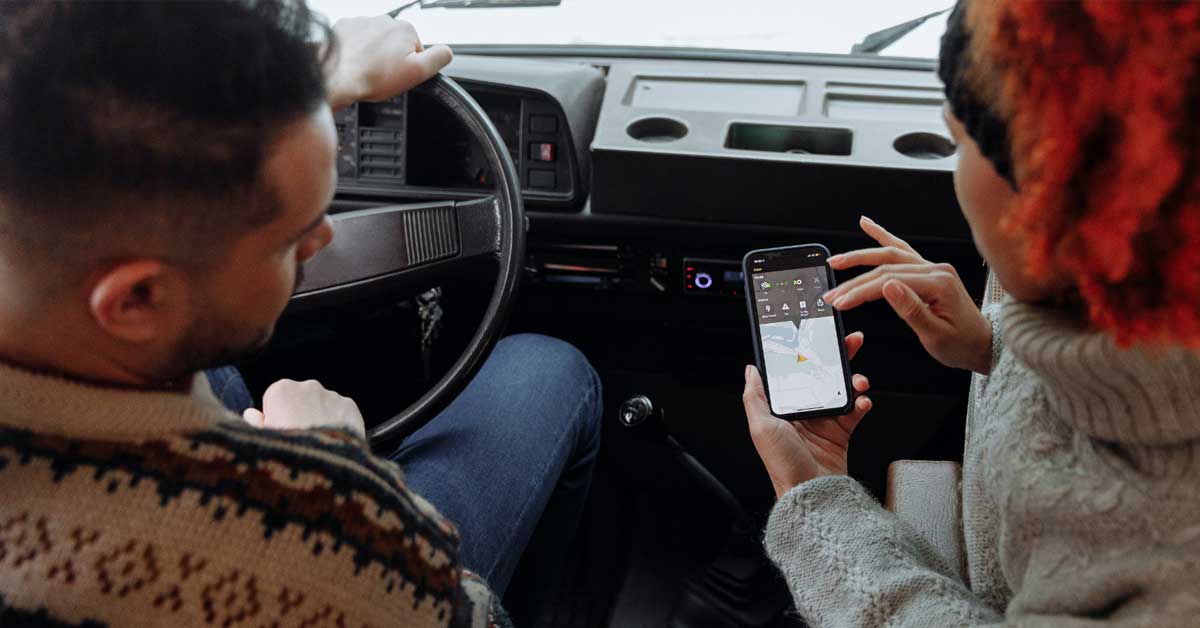Quick Answer:
The first method is a temporary fix – disabling the Google Maps app via your phone’s settings.
The second method is advocacy – joining the Android Auto User Community to voice your concerns or using in-app feedback mechanisms.
When you plug your smartphone into your car’s Android Auto, Google Maps springs into action. While it may be a useful feature for some, not everyone is thrilled with this “helpful” function. If you’re in the latter camp, this guide is for you.
Here, we aim to offer comprehensive solutions for those who’d prefer Google Maps to stay off until told otherwise. But before we dig into the details, let’s understand why this happens in the first place.
Why Does Google Maps Auto-Launch with Android Auto?
You might think that having Google Maps launch automatically is a no-brainer. After all, who doesn’t want instant navigation at their fingertips? But before you dismiss it as another example of Google knowing best, let’s look at some of the driving forces behind this behavior.
The Data-Driven Approach
Google is a company that thrives on data. Based on extensive user analytics, they’ve concluded that most drivers primarily use Google Maps when their phones are connected to Android Auto. In fact, the numbers suggest that Google Maps is often the go-to navigation tool for a large percentage of users.
By making Google Maps auto-launch, Google aims to streamline the user experience, getting drivers on their way without the need for manual intervention.

Convenience vs. Customization
On the flip side, we can’t ignore the fact that Google Maps’ auto-launch feature tends to overshadow other essential Android Auto functionalities.
Some folks are more inclined to use Android Auto for hands-free calling, sending messages via voice commands, or managing their media playlists. For these users, the automatic appearance of Google Maps can feel more like an imposition rather than a convenience.
Limited Scope of Flexibility
While Google’s intention might be to offer a “ready-to-go” navigation option, it limits user flexibility. The auto-launch feature essentially makes the choice for you, which might not align with your specific needs, particularly if you don’t intend to use Google Maps.

The Current State of Android Auto’s Launch Behavior
To say that Android Auto’s launch behavior is somewhat erratic would be putting it mildly. If we dig a bit deeper, we can see how different vehicles and changes over time have contributed to the current state of affairs.
Variability Among Car Manufacturers
Not every car reacts the same way when you plug in your smartphone. Some manufacturers have implemented systems that require manual activation of Android Auto, giving drivers an extra level of control.
In contrast, others go with the default Google behavior, making Google Maps the star of the show the moment you connect your device. These manufacturer-specific policies can add another layer of complexity to the Android Auto experience.
Google’s Short-lived Experiment in 2021
A few years ago, Google gave us a glimmer of hope by experimenting with startup options. Users were given the power to choose what app would launch automatically – be it navigation, music, or the app drawer.
However, Google pulled the plug on this feature without much explanation, leaving users back at square one.
What’s more, the absence of an official statement from Google about the removal of these startup options adds an element of uncertainty. As users, we’re not sure if this feature will make a comeback or if Google has other plans to offer more customization options in the future.
The current lack of communication makes it challenging to predict what changes, if any, we can expect moving forward.
Either way, we’re currently stuck in a limbo of auto-launch behaviors and limited customization, waiting for Google to either provide more options or at least communicate their future plans. Until then, we’ll have to make do with the following workarounds.

Method 1: Disabling Google Maps (Temporary)
Alright, let’s say you’re not thrilled with Google Maps popping up every time you plug in your phone. Well, you can take matters into your own hands. Disabling Google Maps temporarily can be a good “Band-Aid solution.” Let’s walk through the process.
Step-by-step instructions:
- Navigate to Settings: Kick off this escapade by opening the settings menu on your Android phone. Tap on the cogwheel icon that typically resides in your notification shade or app drawer.
- Find Google Maps: Scroll down to the “Apps” section and click on it. Scroll through the list of apps until you find Google Maps.
- Disable the App: Once you locate Google Maps, tap on it to open its settings page. You’ll see an option to “Disable” the app. Tap it, and you’ve effectively sidelined Google Maps from your Android Auto experience.
Pros and cons:
- Pro: Your Android Auto will now launch sans Google Maps, putting you back in the driver’s seat of your startup experience.
- Con: The downside is that disabling Google Maps takes it out of commission for everything else, too. That means no quick address lookups or getting directions outside of Android Auto until you enable it again.

Method 2: Voicing Your Concerns
Sometimes, the pen – or in this case, the keyboard – is mightier than the sword. If you’re not satisfied with having to disable apps just to make Android Auto more user-friendly, why not share your thoughts with the people who can actually make a change?
Steps to make your voice heard:
- Join the Android Auto User Community: There’s an online forum specifically for Android Auto users. It’s a great space to discuss issues, share solutions, and even vent a little. Find the most relevant thread or start your own to articulate your concerns.
- Use the “Send Feedback” Option: In the Android Auto app, navigate to the settings menu. You’ll find an option to “Send Feedback.” It’s a direct line to Google, and if enough people use it, you bet they’ll pay attention.
- Rate and Review: The Google Play Store isn’t just for downloads. You can leave a review for Android Auto and specifically mention the auto-launch issue. Reviews are public and carry weight, especially if a lot of users echo the same sentiment.
Google is a data-centric company. If a significant number of users express dissatisfaction with the current state of Android Auto’s auto-launch feature, it could very well trigger a review of the existing setup.
And who knows? Enough chatter might just make Google rethink its one-size-fits-all approach to Android Auto.

On vs. Off: What’s Right for You?
As we navigate Android Auto’s settings and quirks, it’s clear that the auto-start function of Google Maps isn’t for everyone. But before you commit to shutting it off, it’s important to consider its pros and cons.
Let’s break down the reasons for keeping Google Maps on auto-launch, as well as compelling arguments for giving it the boot.
Why it’s a good idea to keep Google Maps on auto-launch:
- Immediate Navigation: As soon as you plug in your phone, Google Maps is ready to guide you. It’s essentially like having your personal navigator buckled in, just waiting for the cue to start.
- Traffic Updates: Google Maps provides real-time traffic updates, route suggestions, and ETA, which can be invaluable for time-sensitive journeys.
- Voice Commands: With Google Assistant integration, you can ask for directions, change your destination, or even check the weather – all without taking your hands off the wheel.
- Convenience Factor: Honestly, most of us use navigation often when driving. Having Google Maps auto-launch eliminates the need to fumble through your apps while you should be focusing on the road.
- Safety: By automatically launching, Google Maps ensures you’re not distracted trying to open apps while driving, making the whole journey a bit safer.
- Take Note: If you find that your app shows a preview button instead of start button, you’ll want to address this issue if you find it necessary.
Next, let’s look at why you might consider disabling Google Maps auto-launch:
- Resource Hog: Google Maps can consume a considerable amount of battery and data. If you’re not using it, why let it drain your resources?
- Limited Use Case: If you’re only using Android Auto for music streaming or hands-free calling, the auto-launch of Google Maps can be an annoying intrusion.
- Alternative Navigation Apps: If you prefer using Waze or any other navigation service, Google Maps popping up all the time is the last thing you want (or need).
- Control Over Experience: Perhaps you just like things a certain way and don’t want any app, however helpful, launching itself without your explicit consent.
- Avoids Unnecessary Distractions: If you don’t need navigation, the app might be more of a distraction than a help. Those real-time updates and notifications might take your attention away from the road.
Like many things in life, whether to disable Google Maps’ auto-launch feature on Android Auto depends largely on your individual needs and how you primarily use the system. With the options and workarounds we’ve discussed, you’re well-equipped to make this decision.
Final Thoughts
The auto-launch feature in Android Auto is a double-edged sword. Even if you’re using a wireless Android Auto adapter, it simplifies life for some while complicating it for others.
Until Google introduces a more flexible startup option, the methods described above are the best courses of action for those seeking to curtail Google Maps’ enthusiasm.
Remember, your Android Auto experience should be just that – yours. So go ahead and reclaim it.
Meet Ry, “TechGuru,” a 36-year-old technology enthusiast with a deep passion for tech innovations. With extensive experience, he specializes in gaming hardware and software, and has expertise in gadgets, custom PCs, and audio.
Besides writing about tech and reviewing new products, he enjoys traveling, hiking, and photography. Committed to keeping up with the latest industry trends, he aims to guide readers in making informed tech decisions.

